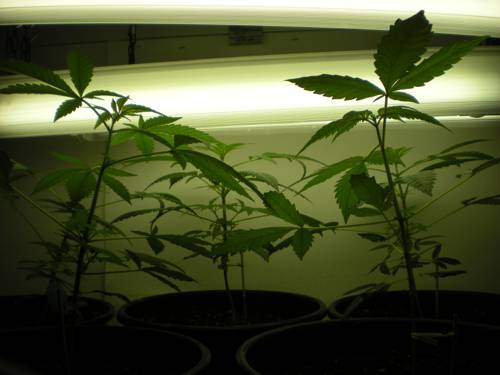
FAQ About Indoor Plant Lighting Solutions

What types of grow lights are best for indoor plants?
When choosing grow lights for indoor plants, common options include fluorescent lights, LED lights, and high-intensity discharge (HID) lights. Each has its advantages: fluorescent lights are energy-efficient and suitable for smaller setups, LED lights are durable and can be customized for specific light spectrums, and HID lights emit a lot of light and are good for larger growing areas. Considerations like plant species, available space, and budget should guide your choice.

How do I determine the optimal placement for grow lights?
The optimal placement for grow lights depends on the light’s intensity and the plant’s specific needs. Generally, position the lights 6-12 inches above the plants. This distance can vary: more intense lights like HIDs can be placed further away, while weaker lights like fluorescents might need to be closer. Adjust the distance to avoid scorching or insufficient light, and consider the light footprint to ensure even distribution.

Can regular LED lights be used for plant growth?
Regular LED lights can promote plant growth but are not optimal compared to dedicated grow LEDs. Grow LEDs are designed to emit light in spectrums that most closely mimic natural sunlight, which is crucial for photosynthesis. Regular LEDs might not provide the full-spectrum light needed for most plants, potentially impacting their health and growth rate.

What is a light spectrum and why is it important for indoor plants?
The light spectrum refers to the range of wavelengths emitted by a light source. Plants require different parts of the light spectrum for various growth stages: blue light promotes vegetative growth, while red light supports flowering. Providing a full-spectrum light that mimics sunlight ensures better health and growth for indoor plants by supporting all aspects of their development cycle.

How many hours of light do indoor plants generally need per day?
Most indoor plants require about 12-16 hours of light each day. The exact duration depends on the plant type: some, like tropical plants, might need more, while others, like succulents, might need less. Consistently providing the right amount of light helps maintain healthy photosynthesis and growth rates.

Do all indoor plants need grow lights?
Not all indoor plants necessarily require grow lights. Many plants can thrive with natural sunlight, particularly those positioned near windows with good light exposure. However, grow lights become essential in environments with limited or inadequate natural light, especially during the shorter days of winter or in rooms with no windows.

What are the signs that an indoor plant is not receiving enough light?
Signs that a plant may not be receiving enough light include leggy or sparse growth, pale leaves, and slow or stagnant development. Additionally, the plant might lean toward the nearest light source. Ensuring adequate light can help rectify these issues and promote vigorous growth.

How can I mimic natural sunlight for indoor plants?
Mimicking natural sunlight indoors involves using full-spectrum grow lights that provide light in all the necessary wavelengths for photosynthesis. Position the lights to imitate the sun’s path, maintaining suitable intensity and duration to match the plant’s natural environment and growth requirements.

What are PAR and lumen, and how do they relate to plant lighting?
PAR (Photosynthetically Active Radiation) is the light spectrum that plants use for photosynthesis, while lumen measures the total visible light output from a source. While lumen indicates brightness to the human eye, PAR is more critical for assessing a light source’s effectiveness for plant growth, as it gauges the usable light spectrum.

Can indoor plants grow with artificial light alone?
Yes, indoor plants can grow with artificial light alone if the light provides the full spectrum necessary for photosynthesis. Using high-quality grow lights, you can simulate the characteristics of natural sunlight, allowing plants to receive the necessary wavelengths for proper growth, even without direct sun exposure.

How can I avoid overheating plants with grow lights?
To prevent overheating, ensure that grow lights are not placed too close to the plants. Use fans for proper air circulation and monitor the temperature of the growing area. Also, employing timers can prevent lights from running too long, maintaining a suitable environment for plant health.

What is a grow light timer and why is it useful?
A grow light timer is a device that turns grow lights on and off at scheduled intervals. This automation is useful for maintaining a consistent light cycle, crucial for plant health, as it mimics the natural rise and set of the sun. Timers help ensure plants get the correct amount of light daily without manual intervention.

Can fluorescent lights support all stages of plant growth?
Fluorescent lights can support all stages of plant growth, but they are most effective for seedlings and leafy plants. They provide a cooler light less intense than other options and can be kept closer to plants. For fruit-bearing or flowering stages, combining fluorescent lights with other sources might be necessary for optimal growth.

Are there specific grow lights for different plant types?
Yes, specific grow lights cater to different plant types and their unique needs. Vegetables and herbs often thrive under full-spectrum lights, while some flowering plants might benefit from increased red light. Researching a plant’s native environment and growth requirements can help choose the most suitable grow light type.

How do I measure light intensity for my indoor plants?
Light intensity for indoor plants can be gauged using a light meter, which measures the amount of light (lux or foot-candles) falling on a surface. Alternatively, apps for smartphones can provide a rough estimate. A plant's light intensity needs depend on its natural habitat, with most tropical plants requiring higher levels than their temperate counterparts.

What are the energy efficiency considerations for grow lights?
Energy efficiency is an important consideration when selecting grow lights. LED lights are typically the most energy-efficient, consuming less power and generating less heat than other options. They may have a higher upfront cost but can provide savings over time due to lower energy consumption and longer lifespan.

How does plant position affect lighting needs indoors?
Plant position significantly affects its lighting requirements. A plant placed directly in windows with ample light may need less artificial supplementation. In contrast, plants located in darker interiors require more artificial lighting. Regularly rotating plants can also ensure they receive light evenly, preventing one-sided growth.

What common mistakes should be avoided with indoor plant lighting?
Common mistakes in indoor plant lighting include incorrect light spectrum usage, improper light distance, inconsistent lighting durations, and neglecting individual plant needs. Ensuring the right type of light, placement and routine can prevent these errors, promoting healthier growth environments.

How can acclimation help when changing lighting conditions for plants?
Acclimation involves gradually adjusting plants to new lighting conditions to prevent shock. Start by slowly increasing light intensity or exposure time when introducing new lights, allowing plants to adapt over days or weeks. This practice helps maintain health and avoids sudden stress from light changes.

What role does natural daylight integration play in indoor plant lighting?
Integrating natural daylight with artificial lighting maximizes a plant's growth environment, utilizing available sunlight while supplementing with grow lights as needed. This combination can ensure plants receive adequate light, especially during seasons or environments with varying natural light levels.
